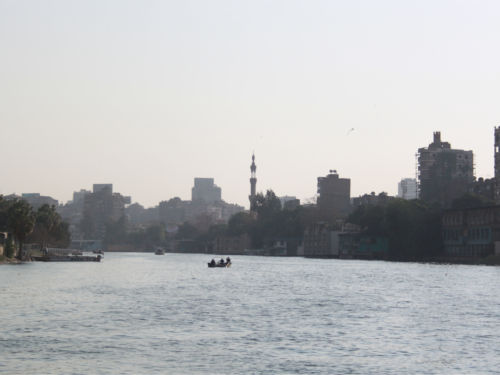Using AI to control energy for indoor agriculture
30 September 2024
Published online 9 May 2015
An accident that discharged tonnes of phosphate into the Nile River does not have health or environmental implications, despite widespread fears

© Mohammed Yahia
It took officials a few days to disclose which type of phosphate had sunk in the Nile waters, and the cargo trapped inside the boat remained underwater for almost a week, before a team of divers managed to extract and recover 90% of the phosphate. Operations to hoist the sunken barge from the riverbed have been hampered by mud accumulating around the craft.
Three days later a public health scare erupted in the northern city of Sharqeya after more than 700 residents were rushed to hospital after drinking tap water unfit for consumption, with some commentators blaming the phosphate spill for the fact that the water was not potable
Officials say the barge was carrying rocks containing inorganic phosphate in the form of tricalcium phosphate Ca3(PO4)2. “Calcium phosphate is only slightly soluble in water,” says Amal El-Safty, the director of the National Toxicology Center at Cairo University, saying it could not have caused the tap water poisoning episode in Sharqeya. The phosphate would have taken 13 to 15 days to follow the current all the way north and reach the city.
“The distance between Qena and Sharqeya is roughly 700 Km, and the Nile flow average speed is around 0.54 Km/hour in the summer season,” El-Safty explains.
If phosphate was the reason, more poisoning incidences would have cropped up upstream before reaching the city of Sharqeya, says Ahmed Sheta, the general director of the environmental crisis management unit at the Egyptian Environmental Affairs Agency (EEAA). He is adamant that another source of pollution in Sharqeya is responsible for the incident – outdated water treatment facilities or water consumed from illegal wells that could be tainted by agricultural run-offs.
The barge was carrying raw phosphate rocks straight out of the quarries, which Sheta says are hardly soluble. “Furthermore, they remained trapped inside the barge and did not spill on to the river bed.”
Immediately after the accident, six water treatment plants operating in the area closed operations to allow for the first water testing to take place.
While phosphates exist in all aquatic environments in small amounts and are a key element for plant and animal growth, in higher concentrations they can cause digestive and abdominal problems for humans upon consumption, and have negative environmental effects on a body of water.
Phosphates stimulate the growth of plankton and aquatic plants, which in turn provide food for fish. “However, if an excess of phosphate enters the waterway, algal and aquatic plants will grow wildly, choke up the waterway, and use up large amounts of oxygen,” adds El-Safty.
This causes eutrophication, also known as algae bloom which occurs when weeds grow rapidly on the surface of the water and use large amounts of oxygen. This can prevent light from reaching lower levels, thus blocking photosynthesis and killing many fish and aquatic organisms. According to El-Safty, the recommended level of total phosphorus in estuaries and coastal ecosystems to avoid algal blooms is 0.01 to 0.1 mg/L
Dead plant build-up from algae blooms can also block water treatment operations and require the use of extra chemicals such as chlorine and aluminium sulphate to treat the water.
Hundreds of water samples have been taken in and around Qena since the incident. The water content and quality was tested in the labs of the ministries of health, environment and irrigation, but officials did not disclose the results publicly, just announcing that the water quality met safety requirements.
“Immediately after the accident, six water treatment plants operating in the area closed operations to allow for the first water testing to take place. They all resumed working a few hours later, when the results showed that the water quality levels were normal and that no large-scale pollution event had occurred,” Sheta said.
El-Safty insists that the laboratory results of water samples taken near where the barge sunk show that the level of phosphates was within acceptable concentrations.
There were also concerns related to the uranium content of the phosphates, but the Egyptian Atomic Energy Authority reported that the uranium levels in samples collected did not exceed 5 ppm, which they say is within the safety margin.
Egypt's waterways are historically polluted through three main channels: untreated industrial waste-water, agricultural waste-water run-offs and untreated domestic sewage. According to a study published in 2011 in the Journal of Advanced Research, more than 400 factories continue to discharge more than 2.5 million m3 per day of untreated effluent into the Nile.
doi:10.1038/nmiddleeast.2015.81
Stay connected: